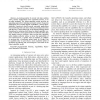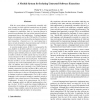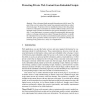59 search results - page 1 / 12 » Object Capabilities and Isolation of Untrusted Web Applicati... |
SP
2010
IEEE
14 years 2 months ago
2010
IEEE
—A growing number of current web sites combine active content (applications) from untrusted sources, as in so-called mashups. The object-capability model provides an appealing ap...
ACSAC
2006
IEEE
14 years 5 months ago
2006
IEEE
With the recent advent of dynamically extensible software systems, in which software extensions may be dynamically loaded into the address space of a core application to augment i...
CL
2010
Springer
13 years 11 months ago
2010
Springer
In a modern programming language, scoping rules determine the visibility of names in various regions of a program [15]. In this work, we examine the idea of allowing an applicatio...
ESORICS
2011
Springer
12 years 10 months ago
2011
Springer
Many web pages display personal information provided by users. The goal of this work is to protect that content from untrusted scripts that are embedded in host pages. We present a...
SP
2009
IEEE
14 years 5 months ago
2009
IEEE
This paper describes the design, implementation and evaluation of Native Client, a sandbox for untrusted x86 native code. Native Client aims to give browser-based applications the...



